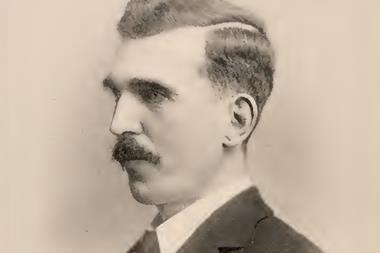Peter Wothers
Oxford University Press
2019 | 304 pages | £20
ISBN 9780199652723

Our names for different substances and our understanding of their fundamental constituents are inextricably entwined. In exploring how what we now refer to as the chemical elements received their names, and how those names have changed throughout history, Peter Wothers’s latest book also offers an insight into the evolution of our understanding of the nature of matter itself.
From the original concepts of materials being constituted of the four ‘elements’ earth, fire, water and air; via the alchemical associations of the seven ‘true’ metals with the seven known planets and the 18th century Phlogiston theory; and ending with our modern understanding of atomic and subatomic structure, the book provides a tour through humanity’s developing awareness of what made up the materials around us.
This is not a straightforward journey either. It is full of dead ends, detours and conflicting ideas, but equally littered with examples of rigorous and arduous investigations, and euphoric revelations of new understanding – such as Humphry Davy ‘bounding round the room in ecstatic delight’ on first seeing metallic potassium revealed by electrolysis.
I was fortunate enough to be taught by Wothers as an undergraduate, and am familiar with his multiple textbooks, but this is his first book aimed at a more general audience. It is immediately clear that a phenomenal amount of research has gone into it. The author’s own passion for chemistry’s history is evident, through references to a huge variety of (al)chemical texts – often consulting multiple editions and translations in different languages to reveal how ideas were accepted (or not) and changed over time. Many of the images have been reproduced from works in Wothers’s own extensive collection.
The book is well paced and clearly organised, and definitely accessible to chemists and non-chemists alike. That said, it deliberately preserves quotations with their original spellings and language (with translations as required). This does mean the reader needs their wits about them, and (while not absolutely necessary) a little knowledge of French, German and Latin is certainly helpful. However, that decision lends an extra dimension to the book. As it traverses history, the language in the quotations tracks alongside the story, starting out almost alien and slowly converging into a more modern and familiar style. The rich tapestry of overlapping and interconnected stories means that any reader will come away with renewed appreciation of the art and artifice of our chemistry.
This book features in our book club podcast, which you can listen to here.












No comments yet